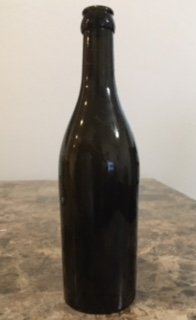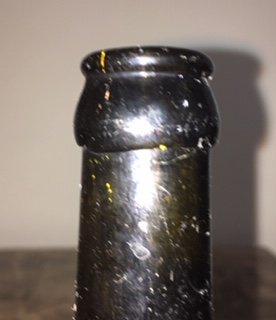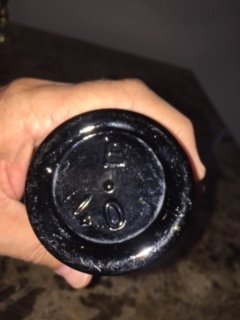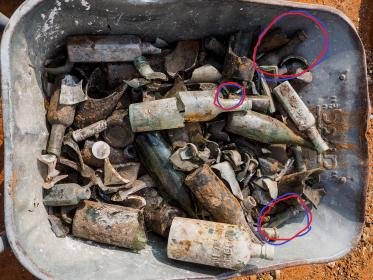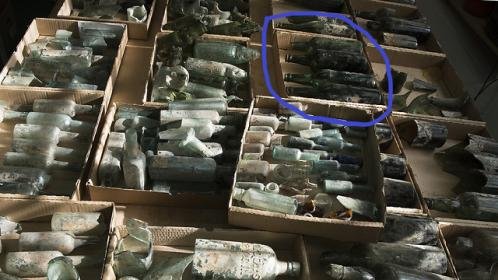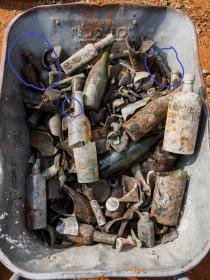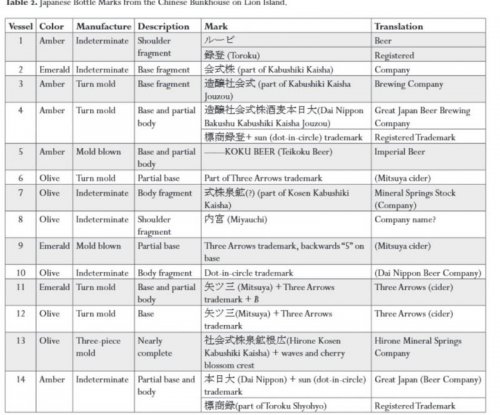I found this Dark green (almost black glass) soda or ale bottle with an applied crown lip. I understand the are more common in Europe and Asia. On the base there is the letter "B" and "40" with a dot in the center.
Does anyone know how old and where this was made, and its possible value; it's in good condition.
Much Thanks,
Greg I Bakersfield CA
Does anyone know how old and where this was made, and its possible value; it's in good condition.
Much Thanks,
Greg I Bakersfield CA

